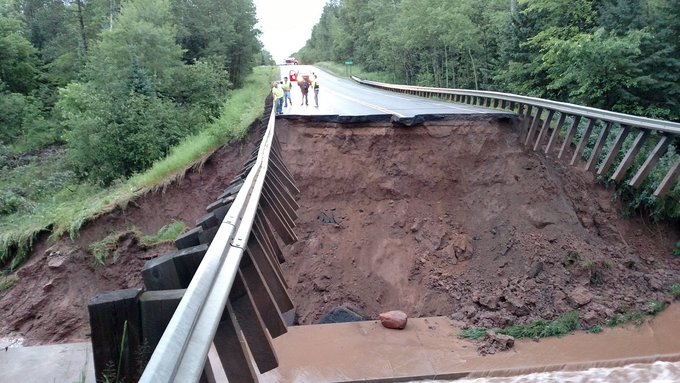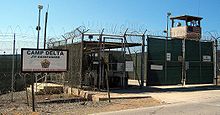Groundwater flooding is rare and little studied in Wisconsin. Given the extent of the damage to
agricultural, residential, and commercial properties caused by the 2008 flooding, questions about the
future likelihood of groundwater inundation naturally arose. Researchers at the Wisconsin Geological
and Natural History Survey and UW-Madison funded by the Wisconsin Groundwater Research and
Monitoring Program (WGRMP) responded by developing a series of models that simulated groundwater
hydrology in the low-lying areas near Spring Green under a range of climate scenarios through 2100.
Findings suggest that years of extremely high water table conditions may still occur but will remain
relatively rare in this century (Joachim et al., 2011).
Higher evapotranspiration is likely to reduce
groundwater recharge overall.
The 2008 floods also highlighted the need for improved mitigation, preparation, response, and recovery
practices. Capitalizing on momentum, a GCC-sponsored conference, “From Sandbags to Sanity,” brought
together policy experts, state and local officials, and nonprofit organizations in April 2009 to discuss the
policy approaches that can minimize the risks associated with this type of hydrologic disaster
(Moynihan, 2009).
These two responses to the June 2008 floods – investment in research to improve scientific knowledge
and enhanced coordination among federal, state, and local actors – exemplify how the GCC carries out
its core missions to enhance the effectiveness and efficiency of groundwater management.
Other Projects in Other Places
Agricultural management in the Central Sands
In times of drought, the demand for agricultural irrigation increases
substantially, especially in the Central Sands region of the state. For
immediate relief, the Department of Natural Resources may approve
emergency high capacity wells for irrigation or livestock supply, as it
did during the 2012 drought. On a long-term basis, a more reliable
strategy for farmers and water systems requires understanding water
balance dynamics and crop biophysics at higher spatial and temporal
resolutions so that process-based models can be used to evaluate the
effects of different irrigation strategies and climates on water demand.
To this end, a recent study funded by the WGRMP conducted an
intense field measurement campaign to refine models and evaluate
how climate and land management have impacted groundwater
recharge and evapotranspiration in the Wisconsin Central Sands over
the past 60 years.
Building Resilience Against Climate Effects (BRACE)
The Department of Health Services BRACE program has worked with seven local public health
departments, or consortiums of health departments, to facilitate a climate and health community
engagement process. Two of the seven local health department pilot projects have chosen to address
public health impacts related to groundwater in a changing climate.
One such consortium of local health
departments (Eau Claire Co., Dunn Co., Pepin Co., and Buffalo Co.) is developing better policy regulating
nutrient contaminants (e.g., nitrates, phosphorous). Activities will include increased testing and a
collaborative group to problem-solve public health interventions. Another local health department pilot
project in La Crosse County is working to increase public awareness of drinking water hazards and
increase testing among private well owners. This project successfully received funding from the CDC for
private well water testing.
Another aspect of the BRACE framework focuses on projecting disease burden related to a changing
climate. One projected disease burden the BRACE program is investigating is gastrointestinal illness
related to increases in precipitation from a changing climate in Marshfield.
 Donald J. Trump
Donald J. Trump 





